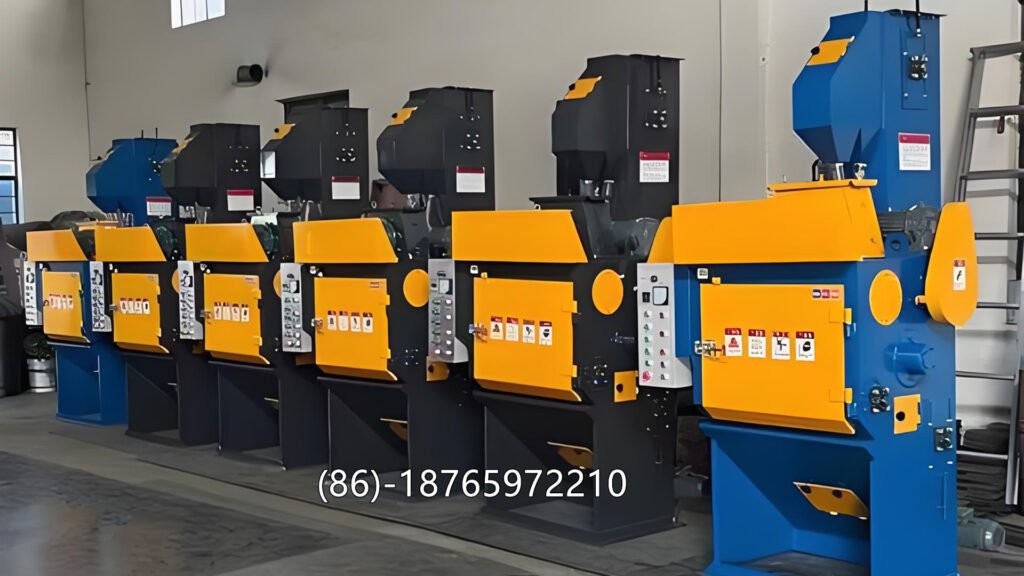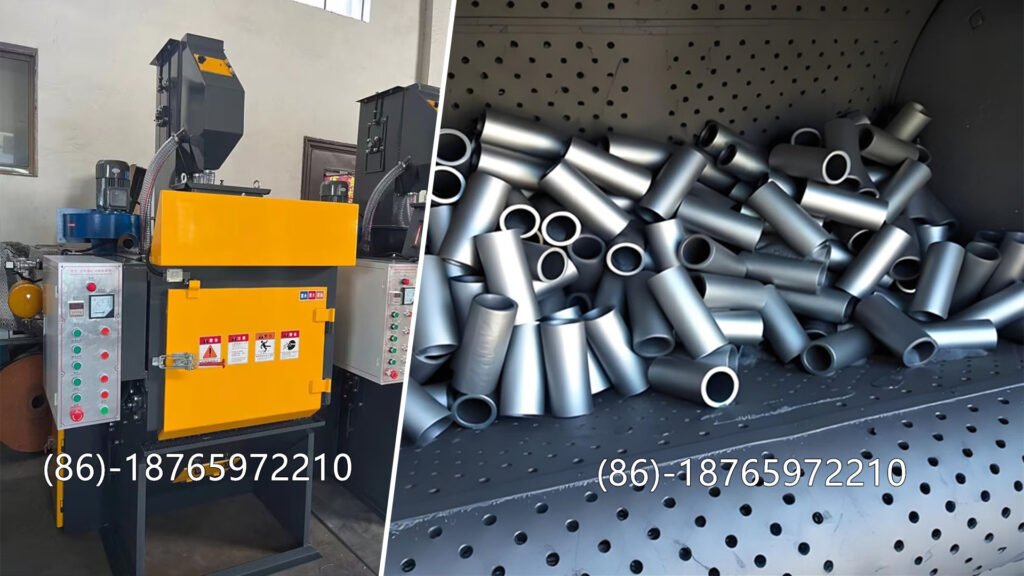Introduction
In most foundry and metal surface treatment workshops, the tumble shot blasting machine is one of the most cost-effective and reliable cleaning systems. It handles castings, forgings, and other small metal components efficiently through continuous tumbling and blasting.
However, to truly maximize the return on investment (ROI), engineers must look beyond the initial purchase price and evaluate the total lifecycle cost, maintenance efficiency, and productivity gains.
Understanding Total Cost of Ownership (TCO)
When evaluating a tumble shot blasting machine, the purchase cost is only one part of the picture. The TCO (Total Cost of Ownership) includes:
- Initial Investment: Machine purchase, installation, and setup.
- Operating Costs: Energy consumption, abrasive media usage, labor, and ventilation system maintenance.
- Maintenance Costs: Replacement of wear parts such as blades, liners, and belts.
- Downtime Costs: Production loss due to machine maintenance or unplanned stoppages.
By calculating TCO, workshop engineers can identify cost-heavy areas and plan maintenance schedules to minimize downtime and reduce long-term expenses.
Key Factors Affecting ROI
a. Machine Efficiency
A well-designed tumble shot blasting machine uses high-efficiency blast turbines that deliver strong and uniform cleaning performance with less power consumption. Machines with optimized blast wheel design can reduce abrasive usage by up to 15–20%, directly improving ROI.
b. Abrasive Consumption
Abrasive cost can account for up to 40% of operating expenses. Choosing the right abrasive type and maintaining proper flow rate is crucial. Regular monitoring of abrasive recycling systems (separator and bucket elevator) prevents contamination and premature wear.
c. Maintenance and Wear Parts
Frequent replacement of liners, blades, or rubber belts increases costs. Opting for wear-resistant materials such as high-chromium steel can extend service life and reduce maintenance frequency.
d. Production Output
A properly loaded tumbler maximizes efficiency. Overloading or underloading both lead to inefficiencies—either due to poor cleaning or excessive energy use. Maintaining optimal load volume (60–80%) ensures the best throughput and cost balance.

Case Example: ROI in Foundry Operation
In one medium-sized foundry, replacing a conventional tumble blaster with a modern energy-saving model resulted in:
- 25% lower abrasive consumption
- 15% reduction in electricity cost
- 20% higher productivity due to reduced cycle time
Within 18 months, the investment was fully recovered, and yearly savings continued to accumulate through lower operating and maintenance costs.
Practical Tips for Maximizing ROI
- Perform regular maintenance on blast wheels and bearings.
- Optimize loading ratio for each batch.
- Use high-quality abrasives and keep them clean with effective separation systems.
- Monitor motor efficiency and replace outdated drive systems.
- Record energy and abrasive usage monthly to track trends and identify improvement areas.
Conclusion
Maximizing ROI from a tumble shot blasting machine is not only about purchasing the lowest-cost equipment—it’s about selecting a durable, efficient, and easy-to-maintain system, then operating it intelligently. Through continuous monitoring, preventive maintenance, and process optimization, a well-managed tumble blaster becomes a long-term asset that enhances both productivity and profitability in the workshop.

